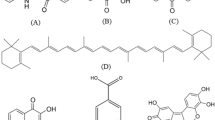Abstract
This study evaluated the potential application of an atmospheric plasma (AP) treatment as a pre-treatment for digital textile printing (DTP) of polyester (PET) fabrics and cotton, in order to determine its viability as an alternative to the usual chemical treatment. The surface properties of the AP-treated fabrics were examined through scanning electron microscopy (SEM) and contact angle, and the physical properties, such as electrostatic voltage and water absorbance, were tested. The properties of cotton and PET with the AP treatment were found to be dependent on number of repetitions and electric voltage. Although no remarkable surface differences were observed by SEM in the fabrics before and after treatment, the static contact angle of the PET after AP treatment was decreased from 85 ° to 24 ° at wave. In addition, the charge decay time decreased as the voltage and number of treatments increased. The absorption height of PET changed after exposure to 7 mm with increasing measurement time. The K/S with and without the AP pre-treated and DTP finished cotton was better than that with the usual chemical modification. In PET, the 0.5 kW and 1 time AP-treated specimen showed the highest K/S values.
Similar content being viewed by others
References
F. Leroux, C. Campagne, A. Perwuelz, and L. Gengembre, Surf. Coat. Technol., 203, 3178 (2005).
S. Y. Cheng, C. W. M. Yuen, C. W. Kan, K. K. L. Cheuk, W. A. Daoud, P. L. Lam, and W. Y. I. Tsoi, Vacuum, 84, 1466 (2010).
D. Hegemann, M. M. Hossain, and D. D. Balazs, Prog. Org. Coat., 58, 237 (2007).
M. J. Tsafack and G. J. Levalois, Surf. Coat. Technol., 201, 5789 (2007).
S. Kalia, K. Thakur, A. Celli, M. A. Kiechel, and C. L. Schauer, J. Environ. Chem. Eng., 1, 97 (2013).
K. H. Kim and K. S. Kim, Prospectives Ind. Chem., 8, 56 (2005).
P. X. Riccobono, J. P. Stevens, and H. Ahmaclzai, Text. Chem. Color., 5, 239 (1973).
J. W. Park, J. H. Kim, and J. Song, J. Korean Fiber Soc., 33, 790 (1996).
J. A. Yu and J. W. Kim, J. Korean Fiber Soc., 40, 903 (2003).
H. Krump, M. Šimor, I. Hudec, M. Jaššo, and A. S. Luyt, Appl. Surf. Sci., 240, 268 (2005).
S. S. Kim, J. Korean Soc. Dyers Finishers, 19, 175 (2007).
K. Koo, T. Wakida, C. I. Sul, and C. Hwan, J. Korean Soc. Dyers Finishers, 10, 25 (1991).
J. D. Choe, K. Koo, and Y. M. Park, Text. Sci. Eng., 48, 400 (2011).
P. H. Bae and H. J. Jo, J. KSEE, 27, 946 (2005).
Author information
Authors and Affiliations
Corresponding author
Rights and permissions
About this article
Cite this article
Park, Y., Koo, K. The eco-friendly surface modification of textiles for deep digital textile printing by in-line atmospheric non-thermal plasma treatment. Fibers Polym 15, 1701–1707 (2014). https://doi.org/10.1007/s12221-014-1701-y
Received:
Revised:
Accepted:
Published:
Issue Date:
DOI: https://doi.org/10.1007/s12221-014-1701-y




